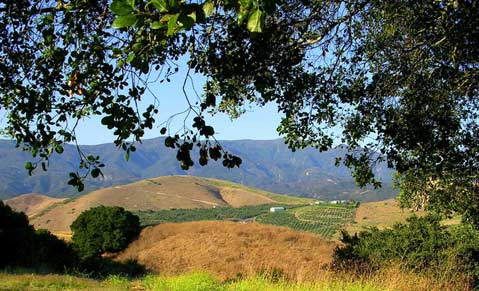The Soil Solution
An Interview with Director Jill Cloutier

Santa Barbara filmmakers Jill Cloutier and Carol Hirashima have directed and produced the documentary The Soil Solution, which has its world premiere as part of SBIFF’s Santa Barbara Filmmakers series. While many of us may look at soil as dirt beneath our feet, this doc shows scientists, farmers, land stewards, and ranchers from this region and beyond explaining the necessity of conserving and regenerating the earth’s precious natural resource if we want our planet to survive.
Cloutier, a longtime KCSB radio host about all things sustainable, recently answered a few of my questions via email.
What inspired you to make this film?
After taking a soils science class at SBCC and interviewing Darren Doherty, an Australian soils expert, we became aware of the precarious state of soil worldwide. Soil and soil life provides us with an immense array of ecosystem services upon which we are dependent, including providing us with food and sequestering carbon.
We want to inspire viewers and to educate them about the amazing world of soil. To inspire them to realize that we do have the power to turn things around and that natural systems are available and able to help. We wanted people to learn more about this vast universe beneath our feet, to champion the soil microbes that work tirelessly for free, and perform such important work.
The more we researched the topic, the more we realized that healthy soil is as vital to our survival as healthy air and water and that soil may provide a biologically-based, low cost solution to global climate change. We also learned that the problem can be the solution. There’s an excess of carbon in the atmosphere and a deficiency of carbon in the ground. So, it’s a good idea to look for ways to fix that imbalance.
While many recent environmental films have ended on a somber note, The Soil Solution concludes with a comment that we have the chance to change our fate. Was this intentional to make the film more accessible to a wider audience?
We intentionally ended on a hopeful note to inspire viewers to investigate the potential of natural systems to solve environmental crises, specifically using soil as a sink and storage bank for atmospheric CO2, a contributor to climate destabilization. Many of the proposed solutions to climate change are costly and very high tech, such as placing huge mirrors in space and covering the earth in a cloud of sulfur.
Carbon sequestration in soil already happens; it’s a natural process, proven and effective. By implementing specific land management practices, we can increase the soil’s ability to sequester atmospheric carbon and to store it for longer periods of time.
Conventional agriculture is a leading cause of degraded soil, but we didn’t make this film to beat up on farmers who are overworked and underpaid. We decided not to focus on the problems that are leading to soil loss, which include over tilling, use of pesticides, over grazing, but to offer solutions.
What we’ve learned from making The Soil Solution is to respect the ground we walk on — our lives depend on it. All of us affect soil health, either through our buying decisions or land management practices (including gardening). Everything that we do to increase soil fertility could be a step in reversing climate change.
Some human rights activists have talked about the need of putting a human face on climate change to better illustrate its impact. Can you explain in human terms how building healthy soil can affect us?
Increasing soil fertility and organic matter is a winning tactic, even if increasing soil health doesn’t solve global climate change. The benefits of increasing soil fertility/organic matter are many: healthier ecosystems, more nutritious food, cleaner water, increased food security, conservation of natural resources — including petroleum, due to less dependence on petro-based fertilizers and pesticides — and conservation of topsoil.
Can you elaborate on carbon sequestration and why it is so beneficial?
Carbon sequestration is a natural process that is going on all around us. Through land management practices that increase soil organic matter, the carbon cycle can be used to sequester more atmospheric CO2. Carbon sequestration is a process that is already happening. It can be influenced through our land management practices.
What policy recommendations would you make at a local, state, and federal level so that we can increase the organic matter in the world’s arable land?
Carol and I are not scientists, so we don’t feel qualified to make recommendations. However, we do believe that once the results are in from the Marin Carbon Project — which we originally included in the film and had to remove until they are officially announced — a lot of policy makers will be looking into this matter.
The Soil Solution screens on Saturday, January 28, 8 a.m., at the Lobero Theatre and on Monday, January 30, 10 p.m., at the Metro 4.



